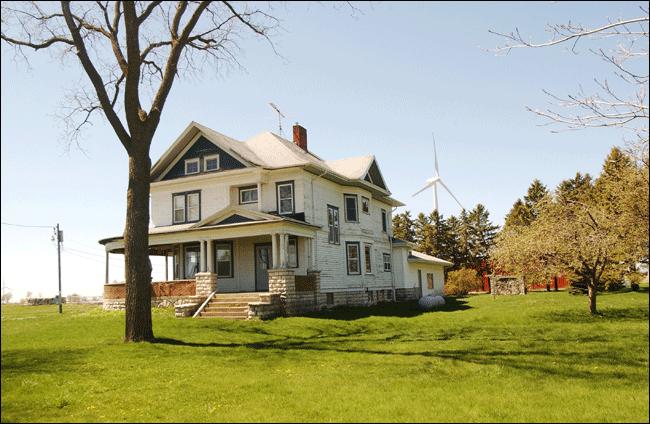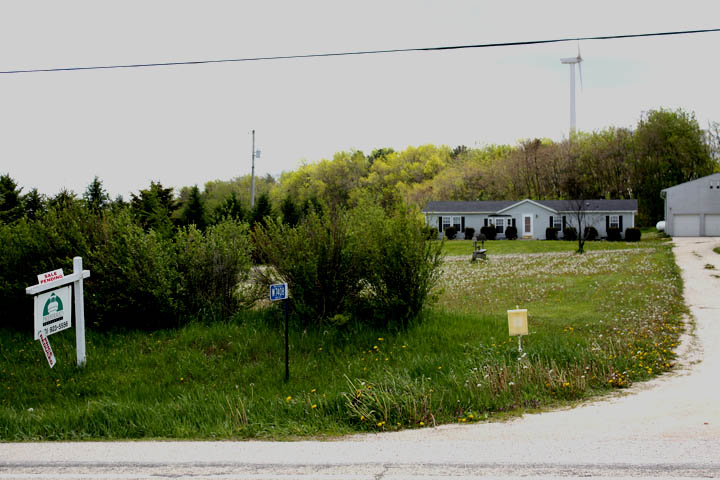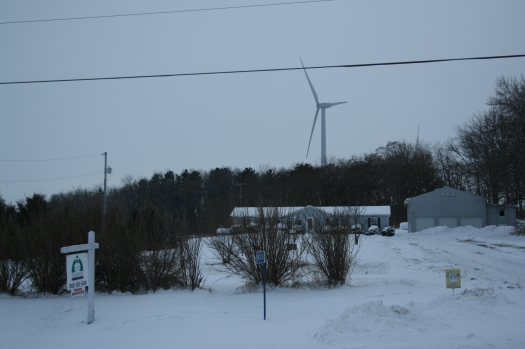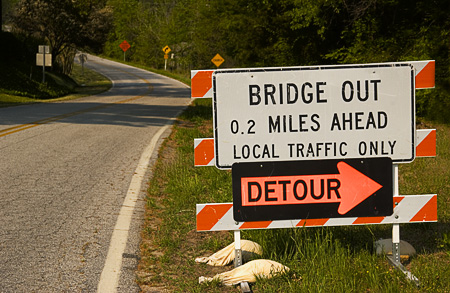Entries in wind farm complaints (77)
6/16/10 Wisconsin needed a second opinion and got it: Brown County Health Department weighs in.
Board of Health advises against wind farms in southern Brown County
SOURCE Green Bay Press Gazette, www.greenbaypressgazette.com
June 16 2010
By Tony Walter,
Wind turbines pose groundwater, health issues, panel says
Dr. Jay Tibbetts, a member of the Board of Health, said there is ample evidence that wind turbines might cause health and safety issues. He mentioned noise and shadow flickers in addition to the groundwater problem.
“They shouldn’t build here, period,” Tibbetts said.
The Brown County Board of Health, citing the threat to groundwater contamination as its chief reason, has recommended that no wind turbines be built in the county’s southern region where a 100-turbine wind farm has been proposed.
Board Chairwoman Audrey Murphy said the history of well contamination and concerns about the impact of noise and shadow flicker “make this area unsuitable for a wind farm.”
Its recommendation will be sent to the Public Service Commission, which is taking public comments on the wind turbine issue until July 6. The PSC has the authority to decide if wind farms can be constructed and is currently awaiting proposals from a wind siting council.
Invenergy LLC, a Chicago-based company, wants to build wind turbines in the towns of Morrison, Wrightstown, Glenmore and Holland and is awaiting siting rules from the PSC.
The Board of Health was asked to study the potential health and safety risks of wind farms. Its report will be forwarded to the Human Services Committee, with a resolution likely going to the County Board at its July 20 meeting.
The members of the Board of Health also endorsed a proposed resolution from Land and Water Conservation Department Director Bill Hafs that asks the PSC to require Invenergy to pay for a full-time county staff member to monitor the construction and operation of the wind farm, if it’s eventually approved.
Asked if he thinks Morrison — where 54 of the 100 wind turbines are proposed — is a safe place for a wind farm, Hafs said, “Without a staff person there, my opinion is no.”
The region is noted for its karst topography, cracked bedrock that led to the contamination of dozens of wells in Morrison in 2006. The area is used for the spreading of animal and industrial waste, which have been blamed for much of the contamination.
Dr. Jay Tibbetts, a member of the Board of Health, said there is ample evidence that wind turbines might cause health and safety issues. He mentioned noise and shadow flickers in addition to the groundwater problem.
“They shouldn’t build here, period,” Tibbetts said.
In its report to the Human Services Committee, the board is recommending that there be a minimum setback range of 2,640 to 3,168 feet from a turbine to an occupied structure. It also is proposing that the World Health Organization’s maximum 30-decibel standard be adopted.
Three representatives of the Brown County Citizens for Responsible Wind Energy attended the meeting. No Invenergy officials attended.
Invenergy submitted its original application to the PSC in 2009, but will resubmit it after the siting rules have been adopted.
6/11/2010 Do wind turbines affect property values? Home in Invenergy wind project finally sells after 740 days on the market and a 45% price cut AND Should wind developers be licensed before they get you to sign contracts that will tie up your land for the next 40 years?
In March of 2008 the 86 turbine Invenergy Forward Energy wind project went on line in Dodge and Fond du Lac Counties, Wisconsin. The setback from non-participating homes is 1000 feet.
Two months later this home in the project goes up for sale.
LISTED MAY 29, 2008: For Sale: Country home on five wooded acres. 1900 square feet, four bedrooms, 3.5 baths, central air, new roof, sky lights in kitchen, deck, family room with wood burning fireplace, vaulted ceilings, first floor laundry, excercise room, whirlpool tub in master bath, 3.5 car garage, your own nature trail through black walnut woods behind the house

MAY 29, 2008: Asking $219,000 No buyers.
WINTER of 2009: Asking Price: $179,900. No buyers.
SPRING of 2010: Asking Price: $158,900. No buyers.
JUNE 4, 2010: After 740 days on the market, SOLD for $129,000
Second Feature
Though the wind industry claims the proximity of wind turbines to a home has no effect on property values, real estate broker and Wind Siting Council member Tom Meyer disagrees. He believes the presence of wind turbines does have a negative impact on property values.
He also believes that wind developers should be licensed before they get you to sign a contract that will tie up your land for the next 40 years.
Here's why:
[The following document can be found on the Wind Siting Council Docket, # 1-AC-231]
Prepared by Tom Meyer For Wind Siting Council Meeting June 9, 2010
Wisconsin Statutes Chapter 452 Real Estate Practice
The State of WI has a history of protecting the consumer of real estate services and holding real estate brokers accountable.
The ability to provide a limited practice of law is afforded to brokers by a 4-3 vote of the 1960 WI Supreme Court (The Dinger Case). This right is closely regulated and serves the public well for 60 years.
The legislature and the real estate industry in WI has worked cooperatively to modify Wisconsin’s agency law over those years to enhance the business models available to the WI consumer and raise the level of service and skill provided to the consumer by the licensee.
The activities of persons employed by, or acting on behalf of Turbine Developers, are substantially real estate brokerage services. The services are provided to the Lessor (the landowner) on behalf of the Lessee, (the wind energy developer).
Sign them up
A term commonly used in describing the door to door approach to obtaining leases where land owners “host” a turbine(s) is “Sign them up”.
While sign them up is not a legally defined term, what is being signed is a legally binding contract: a lease. What happens prior to the land owner signing the lease is “negotiation”, another legally defined term. See subsection 452.01
Atypical Lessee – Lessor Relationship
The lease instrument in Wind Energy Development is drafted by the LESSEE—the developer, not the landowner.
The more familiar practice in everyday real estate experience where a landowner leases property to another party is the reverse of what happens in wind energy development.
In siting wind turbines, the developer goes to the landowner.
The developer comes to the property with a vast amount of knowledge and preparation.
There is virtually no advanced notice and no opportunity to brainstorm with other landowners.(In fact we are told by Wind Siting Council members with wind energy interests that it is not favorable to their profit margins to have owners come together to discuss terms prior to signing contracts.)
The developer arrives with a contract and a sales presentation. The wind energy persons have stated that it is common for a family owned farm operation to be struggling financially in Wisconsin, and the promise of $4000 annual payments is attractive.
Protection for the Wisconsin Citizens who consider wind energy development leases
Providing a seven (7) day window of opportunity for the landowner to have the lease reviewed by legal counsel is a good start to protecting Wisconsin residents.
Considering the practice of soliciting lease agreements is a limited practice of law and not incidental to the work of the wind energy developers, it seems prudent for the wind energy developers to be Wisconsin licensed real estate brokers.
Advantage to the Public of Wind Turbine Developers being licensed real estate brokers:
An avenue of recourse through the Real Estate Board
Better disclosure of representation
Minimum level of competence for persons negotiating real estate transactions
Statutory defined duties of a broker:Fair and honest treatment. Reasonable Care and skill. Disclosure of material adverse facts. Confidentiality. Provide accurate market conditions. Accounting. Objective presentation of the lease.
Supervision standards for employees limiting who may discuss lease terms with the consumer
Administrative Rules
RL 15: Maintain copies of documents---Assures the public records of agreements and business practices are available for investigation
RL 16 Use of approved forms and legal advice—RL 16.05 prohibits the licensee from giving legal advice concerning rights and obligations. Will help with landowners being coerced into thinking their agreements are confidential.
RL 17 Protects the consumer from receiving real estate service from a non-licensed person.
RL 24 Conduct and ethical practices---Agreements are in writing, accurate representation of interests,
RL 25 Continuing Education—Keep the wind energy developer current with real estate laws
Provided by Tom Meyer, Wisconsin Real Estate Broker
HAVE YOU REACHED OUT AND TOUCHED YOUR PSC TODAY?
The PSC is asking for public comment on the recently approved draft siting rules. The deadline for comment is July 7th, 2010.
The setback recommended in this draft is 1250 feet from non-participating homes, 500 feet from property lines.
CLICK HERE and type in docket number 1-AC-231 to read what's been posted so far.
CLICK HERE to leave a comment on the Wind Siting Council Docket
5/30/10 BRIDGE OUT: Rural residents fall into information gap about Wind Turbine Noise and Ethics
"Evidence does not support the conclusion that wind turbines cause or are associated with adverse health outcomes"
"Gaps remain in our knowledge of the impact that wind energy may have on human health"
-Dr. Jevon McFadden, "Wind Turbines, a Brief Health Overview", slide 76 Prepared for the Wisconsin Wind Siting Council. Dr. McFadden delivered a shorter version of this presentation to the council on May 17th, 2010
Ontario Health and Environmental Officials Agree: On-the-ground sound measurement is needed near wind farms.
SOURCE: The Acoustic Ecology Institute, aeinews.org
May 28 2010
Over the past week or so, two reports from Ontario have spurred a fair amount of notice and comment among those following wind development issues.
First, the provincial health office responded to the public’s concerns about health problems reported by some wind farm neighbors, framing its answer carefully and narrowly: ”According to the scientific evidence, there isn’t any direct causal link between wind turbine noise and adverse health effects,” said Dr. Arlene King, Ontario’s Chief Medical Officer, as reported by the Vancouver Sun.
It is no real surprise that the sound levels near wind farms aren’t loud enough to directly cause physiological damage or effects, though it seems clear that annoyance and sleep disruption may well contribute to health effects; the report acknowledges the likelihood of some annoyance, and notes too that while low-frequency sound is below generally perceptible levels, some people who hear these frequencies better than most may be bothered.
While the report itself is brief and lacks the detail of the recent industry-funded AWEA/CanWEA report, which reached the similar conclusions in the same narrowly-focused task, King’s report frames the results with two crucial but under-reported observations:
By way of introduction, the report explicitly states a simple fact that is rarely acknowledged: “Little information is available on actual measurements of sound levels generated from wind turbines and other environmental sources.
Since there is no widely accepted protocol for the measurement of noise from wind turbines, current regulatory requirements are based on modelling.” Indeed, sound models are used to determine what distance a turbine needs to be from nearby homes in order to meet local statutory noise limits (which stand at 40dB in Ontario).
And in its final words, the report stresses the corollary to this observation: “The review also identified that sound measurements at residential areas around wind turbines and comparisons with sound levels around other rural and urban areas, to assess actual ambient noise levels prevalent in Ontario, is a key data gap that could be addressed.
An assessment of noise levels around wind power developments and other residential environments, including monitoring for sound level compliance, is an important prerequisite to making an informed decision on whether epidemiological studies looking at health outcomes will be useful.”
Actual rural ambient noise levels are often very low, so that wind farm noise becomes bothersome at lower levels than industrial or transportation noises prevalent in urban and suburban areas; and, as noted in the body of the report, most of the case studies and other reports of health effects lack any clear information on how loud the turbine sounds are in the homes of those being affected.
So while this report is in large part another seemingly definitive, yet stubbornly partial, assessment of the health effects reported near wind farms, it also lays the groundwork for much-needed on the ground assessment of noise patterns around wind farms.
On a similar note, Ontario Ministry of Environment officials confirmed this week that they do not have the capability to record or assess the noise near wind farms where noise complaints arise.
According to the Windsor Star, “Although hundreds of wind turbines have already been built in Ontario, Michael Parker, district manager for the environment ministry, said staff have not yet been given noise-monitoring equipment. The ministry is responsible for ensuring that wind turbine noise reaching a residence doesn’t exceed 40 decibels, he said.
If a complaint about turbine noise is made to the ministry, two environment officers are sent to the area to listen for the noise and contact the turbine owner, Parker said, noting that the ministry could still intercede with turbine owners even without hard data on the noise levels.
In some cases, turbine speeds have been scaled back or the turbine shut down completely.”
In January, the Ministry of Environment issued two Requests for Proposals seeking advice and technical standards to use in assessing wind farm noise.
The RFPs said that “The Ministry requires a consultant to assist in the development of a measurement procedure to assess noise compliance of existing wind farms with the applicable sound level limits,” noting that ”Unlike typical industrial noise sources, measurement of audible noise from wind turbines in general raises technical challenges.”
At that time, the Ministry acknowledged that its “Noise Guidelines for Wind Farms…do not contain a measurement method for assessing the actual noise impact.”
SECOND FEATURE:
When is a conflict of interest not a conflict of interest?
When an official who stands to make some money says it is not and just 'leaves it at that'
Click on the images below to watch news stories about what happens when those who make the rules anticipate financial gain.
For those of us following the proceedings of Wisconsin's Wind Siting Council, this is an issue very much on our minds. It is impossible not to notice a clear majority of the council members have direct or indirect financial interest in the outcome of the siting guidelines they are helping to create. CLICK HERE TO SEE WHO IS ON THE COUNCIL
VIDEO SOURCE: http://www.wnem.com
5/28/10 On Shadow Flicker and Wind Turbines
Shadow Flicker: "Similar to flicker experienced when driving"
-Dr. Jevon McFadden, slide 15, 5/17/10 presentation to Wind Siting Council.
Click on image below to see Wind turbine shadow flicker video taken in a PSC approved wind project Fond du Lac County home at 6:30 am on Tuesday April 28th,
More shadow flicker from Fond du Lac County
Click on the image below to watch Better Plan's audio interpretation of shadow flicker
Click on the image below to see shadow flicker in a home in DeKalb County
The family living in this home is keeping a diary about their life with wind turbines. CLICK HERE TO VISIT THEIR WEBPAGE
Not a good neighbor
Sunday, May 23, 2010
Sound is horrible today
Saturday, May 22, 2010
Irresponsible Wind Company
last night there was no sound from turbines. slept through the night and woke up rested. this morning it was a good day to be outside, beautiful weather and some turbines off and some lightly spinning. the winds are picking up (winds from the S, 11mph) this afternoon and the blades are starting to feather out which is creating the low droning. one moment there is peace and the next is filled with this annoying background chopping/low frequency sound. these turbines are too close to our home. how irresponsible of the wind companies to erect these machines so close...this is happening all over. so many people have to suffer. this could be solved by placing the turbines at least a mile away.
5/28/10 Why was this home abandoned? Who used to live here? What did the PSC say about their turbine related troubles?
Note from the BPWI Research Nerd: The Fond du Lac County home in the photo below appraised for $320,000 in 2007, the year before the Invenergy turbines went on line.
In 2009 the family abandoned the home because of turbine noise and vibration.
A few weeks ago it was sold at a sheriff's sale. The opening bid was $107,000. There were no takers.
A New York bank paid less than the opening bid and now owns the empty house.
 The former home of Ann and Jason Wirtz now sits abandoned near the Forward Energy Wind Center, which went online in 2008 in Brownsville. (Photo by Dave Wasinger)
The former home of Ann and Jason Wirtz now sits abandoned near the Forward Energy Wind Center, which went online in 2008 in Brownsville. (Photo by Dave Wasinger)
STATE PANEL DISMISSES WIND FAMILY'S WIND FARM COMPLAINT
May 27, 2010
A family seeking payback for health, business and property losses allegedly caused by a wind farm suffered a setback Thursday when the Public Service Commission of Wisconsin rejected the complaint.
PSC Chairman Eric Callisto said the commission is not the proper forum for personal injury claims and said Ann and Jason Wirtz, who now live in Oakfield, should take their case to circuit court.
The Wirtzes in April filed their complaint arguing the Forward Wind Energy Center in Dodge County, which went online in 2008, caused sleep deprivation, headaches and stomach problems as well as the loss of an alpaca-breeding business and a decline in their property value. The Wirtzes moved from their home in Brownsville in September 2009 without selling it.
The family directed its complaint at wind farm developer Invenergy LLC, Chicago, though the Wirtzes have not specified how much money they want from Invenergy. The Wirtzes did not comment on the project prior to PSC approval in 2005.
Madison-based attorney Ed Marion, who represents the Wirtzes, said they chose to go to the PSC first instead of suing because the commission regulates energy companies and is charged with protecting the rights and interests of the public.
“We’re disappointed by the decision,” he said, “but not entirely surprised.”
Marion said he does not know what the family will do next. He said a lawsuit is the likely option, though the family could appeal the PSC decision.
The PSC’s decision Thursday was good news to wind developers. Joe Condo, Invenergy’s vice president and general counsel, said the PSC was right to stay out of a personal injury claim filed by a family.
“I’m not going to speculate on what they’re going to do or how we’re going to respond,” he said. “This is not a normal course of action for us.”
Jim Naleid, a managing partner for Holmen-based AgWind Energy Partners LLC, which was not involved in the Forward Wind Energy project, said allegations of health problems, such as those claimed by the Wirtzes, simply were not an issue in 2005 when the PSC approved the Forward project. He said he doubts such allegations will attract attention from state wind farm regulators.
“The claims of physical impacts are a recent phenomenon and something that comes from the anti-wind folks in particular,” he said. “If there was merit on a wide-scale basis, I don’t think the PSC would issue these permits.”
The Wirtzes’ complaints came too late to merit PSC consideration, said Commissioner Mark Meyer. The family, he said, has the right to make its statement for PSC consideration of an upcoming 100-turbine wind farm Invenergy proposes for Brown County, but he said the PSC’s review of Forward ended a long time ago.
“The commission,” he said, “is not in the business of handling private causes of action against utilities.”


